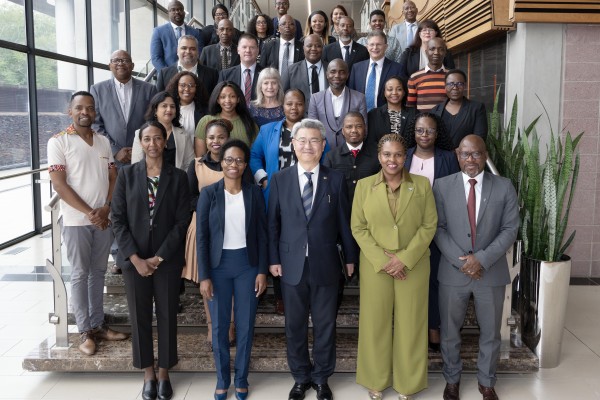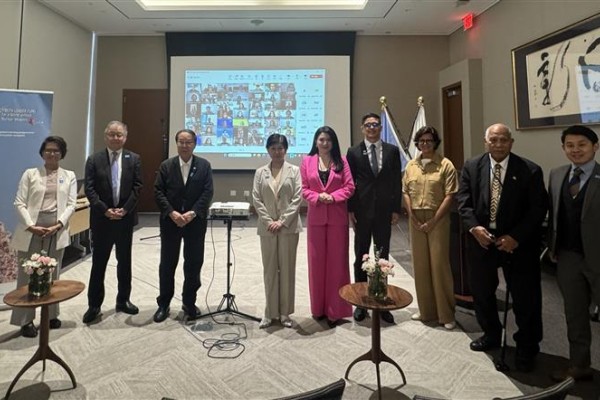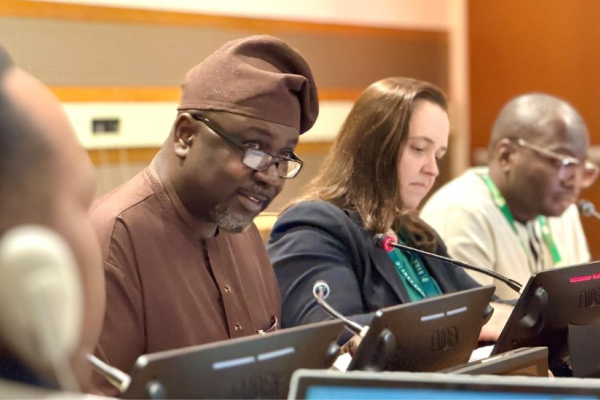13 October – 7 November 2025

Nineteen practitioners from sixteen African countries completed the inaugural UNODA African Fellowship on Small Arms and Light Weapons (SALW) Control programme established following the United Nations General Assembly’s decision in resolution 77/71 (2022) to create a dedicated fellowship training initiative to support the implementation of the UN Programme of Action (UN PoA) and the International Tracing Instrument (ITI). Responding to Member States’ calls for more sustained, practical, and context-specific capacity-building, the Fellowship was designed to strengthen capacities in national institutions, deepen technical and operational expertise, and build a long-term network of SALW practitioners across the continent.
Over three intensive weeks, the Fellows participated in training sessions in Lomé and Ouidah, engaging with national authorities, regional organizations, and international experts responsible for the management of small arms and light weapons from import and marking to storage, tracing, and destruction.
The Fellowship brought together a unique mix of professionals, from defense and foreign affairs officials to police and military officers, arms-marking technicians, and members of national SALW Commissions. Despite their different institutional backgrounds, the fellows shared a common mission: reducing the proliferation, misuse, and diversion of small arms and light weapons in their respective countries.

Opening ceremony: click image to watch video
A Community of Practice Emerges
During the opening sessions at UNREC, representatives of the Togolese authorities, the UN Resident Coordinator, and UNODA Director and Deputy to the High Representative, Adedeji Ebo, emphasized the urgency of reinforcing SALW national control systems in a region where illicit flows, violent extremism, and organized crime continue to threaten stability.
The first days of the Fellowship were dedicated to building a solid normative foundation. Participants received a regional overview from the African Union on continental priorities and the broader peace and security context, followed by a series of sessions led by UNREC, UNODA and UNITAR on global and regional frameworks, roadmaps, and regional dynamics. They explored States’ commitments under the UN Programme of Action and the International Tracing Instrument, reviewed key outcomes of recent UN PoA meetings, and discussed how these commitments shape national responsibilities. The Fellows also examined national normative frameworks and coordination mechanisms, including how legislation, civilian access provisions, and end-user documentation and transfer controls function in practice. Introductions to MOSAIC guidance, PoA reporting and international assistance request exercises, further helped participants understand the importance of POA reporting and how to turn such report into assistance requests. The International Action Network on Small Arms (IANSA) and the local chapter of the West Africa Network for Peacebuilding (WANEP) were invited to discuss cooperation with civil society organizations.
Connecting Global Norms With National Realities
Building on the Week 1 sessions at UNREC which covered the UN PoA and ITI, MOSAIC, coordination mechanisms, reporting and assistance-request processes, and engagement with civil society the programme also embedded practical exercises directly into these modules. Throughout the week, group work, scenario discussions, and fishbowl exchanges were used to deepen understanding and translate the presentations into practice. The Fellows discussed how their legislative and administrative procedures operate in practice, explored coordination arrangements among security institutions, and reviewed the procedural steps involved in marking, tracing, transfers, and reporting. They compared how different countries organized similar functions and shared examples of challenges encountered in their own institutional setups. The exchanges provided space for the participants to look closely at how their national mechanisms function and to compare approaches with peers from across the region. A dedicated presentation by UNIDIR examined craft production, underscoring how locally manufactured weapons challenge existing marking and tracing systems.
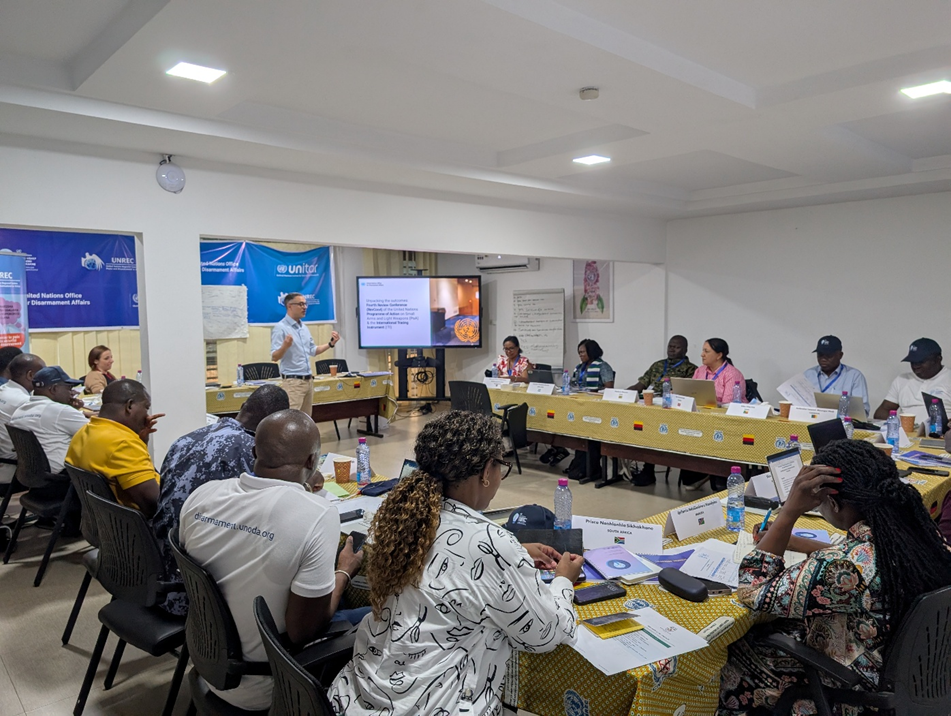
From Dialogue to Practice: Learning in Real Environments
The Fellowship’s [MM1] second week took place at the Training Centre for Peacekeeping Operations in Lome (CEOMP). This week marked a transition from conceptual discussions to applied technical work, with a strong emphasis on the operational dimensions of tracing illicit small arms and light weapons. Participants worked alongside armory managers and PSSM instructors to examine storage conditions, safety procedures, and the way weapons and ammunition are documented, safeguarded, and organized within functioning stockpiles. This practical exposure was reinforced through a field visit to a small armory in Lomé, where fellows observed first-hand how entry and exit procedures are managed, how weapons are controlled at the point of storage, and how gaps in infrastructure or documentation can influence diversion risks.
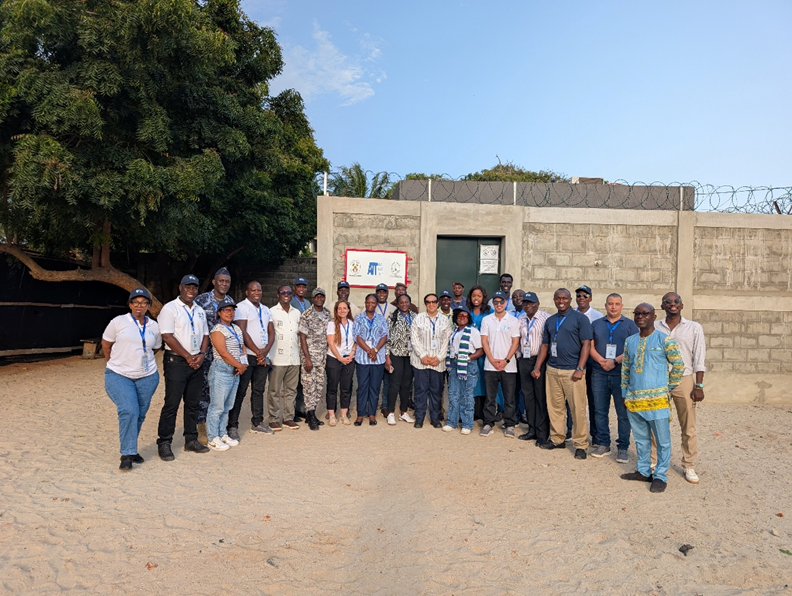
Field Visit at Lome Prison Weapons and Ammunition Storage
Tracing formed a major pillar of this phase and was delivered by several specialized organizations, each addressing a distinct part of the process. Conflict Armament Research (CAR) led the technical segment, guiding participants through the identification and documentation of weapons, the interpretation of markings, and the types of information needed to reconstruct a weapon’s history. INTERPOL focused on the international cooperation architecture, introducing the Fellows to the iARMS database, explaining how tracing requests are submitted and verified, and outlining the procedures used when national agencies conduct cross-border investigations. The World Customs Organization (WCO) contributed to the segment on international transfers and border management, demonstrating how customs authorities use the CENcomm platform under the WCO SALW project to exchange operational information, process seized weapons, and coordinate with national tracing focal points.
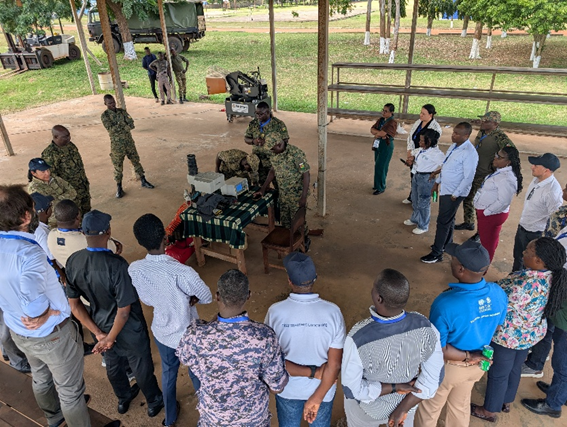
Marking Demonstration

Marking demonstration
At the CPADD Centre for Advanced Training in Demining and Clearance Operations (CPADD) Ouidah, the Fellowship shifted to the practical and highly technical aspects of handling, collecting, and destroying small arms, light weapons, and ammunition. Instructors guided participants through safe procedures for managing recovered weapons and ammunition whether seized, surrendered, or collected during operations and explained how improper handling can contribute to accidents or diversion. A strong emphasis was placed on preparing items for destruction, including sorting, safety checks, and the specific precautions required for different categories of materiel. The Fellows practiced the documentation and record-keeping of collected weapons, documenting identifying features through photos, serials, and basic tracing information.
The module culminated in a series of practical destruction activities, during which participants observed the controlled demolition of various SALW items, including firearms, ammunition, grenades, and anti-tank ordnance, following CPADD’s established safety protocols.
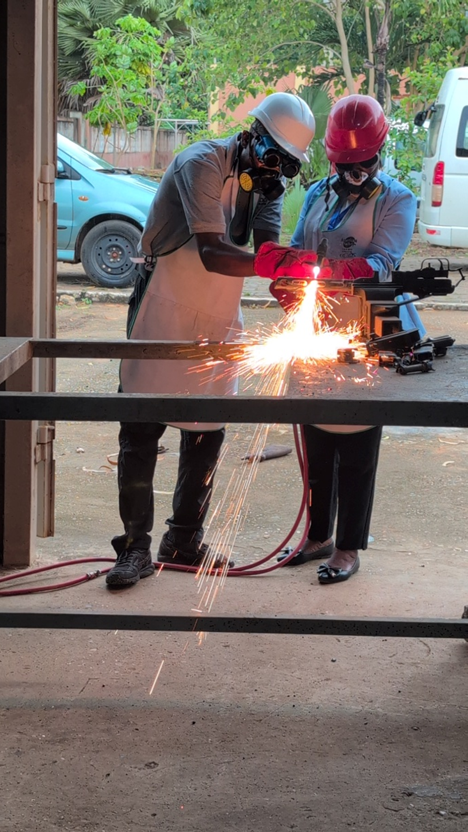
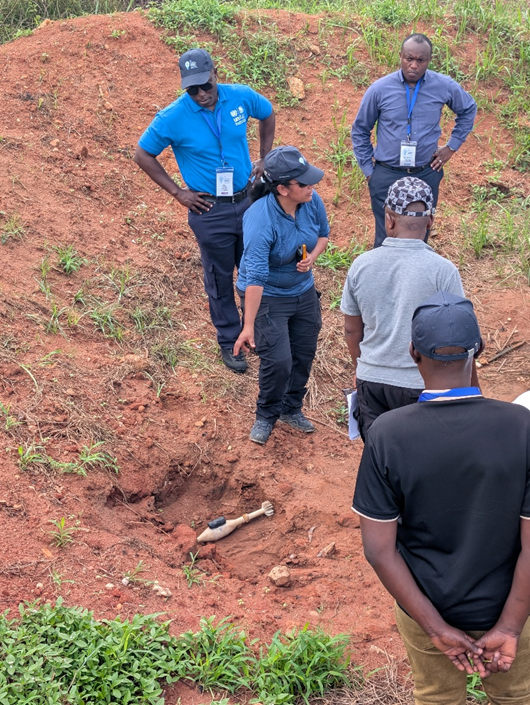
Detonation of Light Weapons ammunition
Building Trainers Who Multiply National Capacity
To ensure the Fellowship’s impact continues long beyond the three-week programme, participants took part in a full Training-of-Trainers track. Guided by adult-learning specialists from UNITAR, they explored facilitation techniques, session planning, communication methods, and ways to adapt technical material for diverse audiences.
Security in Context: Gender, Technology, and Emerging Threats
The Fellowship also invited participants to consider the broader landscape of armed violence and weapons governance in Africa. Sessions on gender and intersectionality made clear that the impacts of SALW are not experienced equally across communities, underscoring the need for inclusive approaches to policy and practice.
Specialized modules explored emerging technologies such as polymer and modular weapons, which pose new challenges for marking and tracing. Judicial processes, enforcement mechanisms, and cross-border dynamics were also explored.
Turning Insight into Action: The Fellows’ Projects
Throughout the programme, each participant developed a national project proposal aimed at addressing a priority challenge in their country. Supported by trainers and other guest speakers/presenters as mentors, fellows identified leverage points within their national systems and designed interventions that were realistic, actionable, and aligned with national and regional commitments.
The resulting project concepts reflected a wide range of priorities: improving national databases, upgrading marking systems, strengthening legislative frameworks, initiating new training programmes, enhancing coordination mechanisms, addressing border communities, and reinforcing PSSM. In Ouidah, each Fellow presented their project to their peers to be assessed. The best project was awarded to the participant from Sierra Leone which aimed at developing a centralized digital arms registry linked to the Police and military database.

Individual project presentations
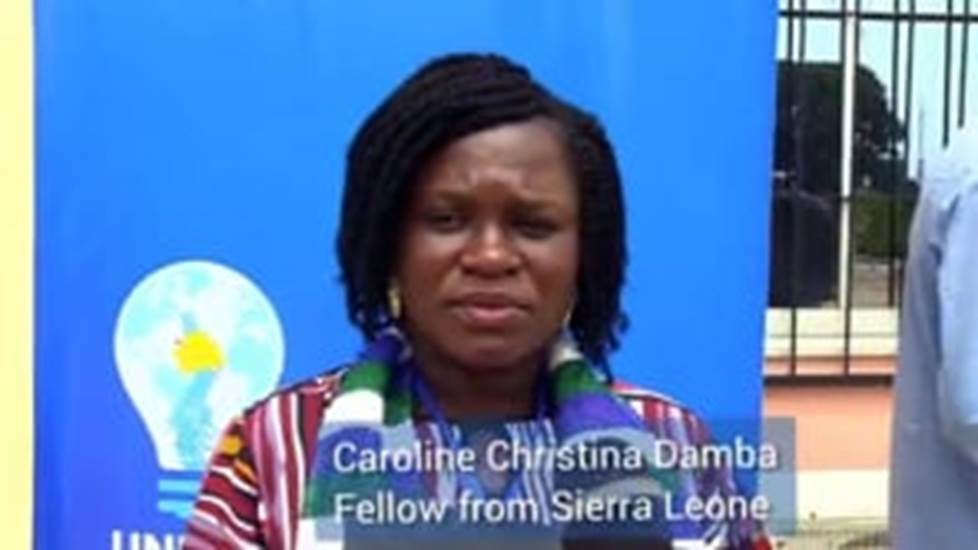
A Partnership Strengthening Regional Security
The Fellowship was delivered through close collaboration between UNODA and UNREC, drawing on UNREC’s regional expertise and operational partnerships. CEOMP and CPADD provided essential technical and field-based components, while the governments of Togo and Benin ensured seamless implementation across three training sites.
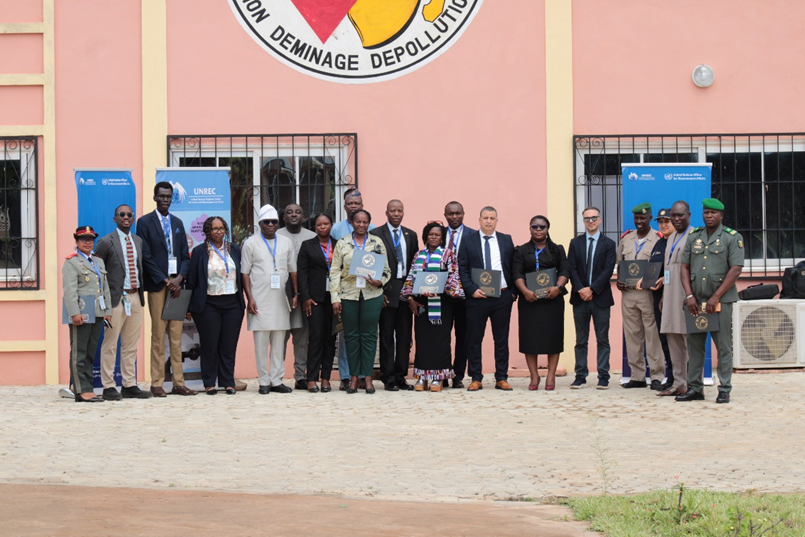
A Cohort Ready to Lead
As the Fellowship concluded, the nineteen participants returned to their home countries with strengthened skills, new analytical tools, and a continental network of peers they can rely on. Their work will directly support national reforms, reinforce implementation of international and regional commitments, and contribute to reducing armed violence across Africa.
UNODA and UNREC remain committed to supporting Member States through continued technical assistance, mentorship, and targeted capacity-building initiatives, ensuring the momentum generated by this first Fellowship continues to grow.
